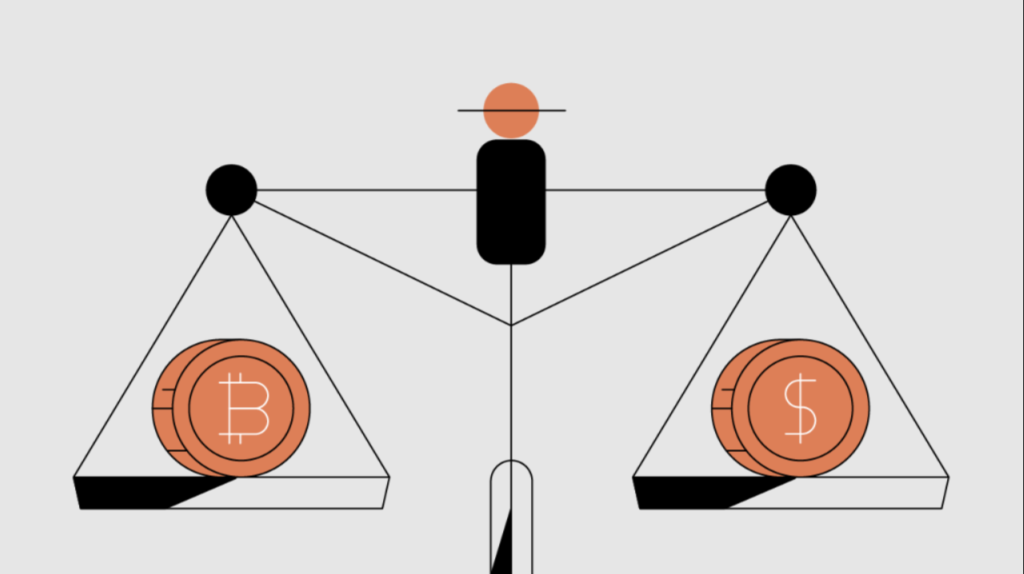Fiat Currency vs Digital Currency: Fiat currency is traditional government-issued money, while digital currency encompasses electronic forms like cryptocurrencies (decentralized) and central bank digital currencies (controlled).
In the rapidly evolving financial landscape, the traditional concepts of currency are undergoing a transformative shift. But with the rise of cryptocurrencies and central bank digital currencies (CBDCs), a question emerges: what’s the difference between traditional fiat currency and digital currency?

What is Fiat Currency?
Fiat money is legal tender issued by a government. It has no intrinsic value; its worth is tied to the currency it represents. Examples include the U.S. dollar, euro, and yen. Central banks control fiat currency issuance and policies. It exists in physical form as paper bills and coins. While generally stable, some fiat currencies experience inflation. Transactions involving fiat currency require intermediaries like banks and financial institutions. Here are some key characteristics of fiat currency:
- Physical Form: Traditionally exists as banknotes and coins.
- Centralized Control: Governments and central banks control the issuance and circulation of fiat currency.
- Relatively Stable: Fiat currencies are generally consider stable, with inflation being manage by central banks.
Pros
- Widely accepted: Fiat currencies are legal tender within their issuing countries, making them the most universally accepted form of payment.
- Stability: Central banks can implement monetary policies to control inflation and stabilize the value of fiat currencies.
- Ease of use: Fiat currencies are easy to use, transfer, and store in both physical and digital forms.
Cons
- Inflation risk: Fiat currencies are not intrinsic in value, making them susceptible to inflation over time.
- Counterfeiting risk: Fiat currencies can be counterfeited, which can undermine their value and trust.
- Government control: Governments have the power to issue new fiat currency, which can lead to currency debasement.
What is Digital Currency (Cryptocurrency)?
Digital currency, such as Bitcoin (BTC) and Ethereum (ETH), derives value from its native blockchain. It operates on decentralized networks, governed by blockchain protocols and code. Unlike fiat currency, digital currency exists purely in digital form. Historically volatile, some stablecoins address this by maintaining price stability. Trustless peer-to-peer transactions are possible due to decentralized networks. Following, we’ll explore two main categories:
- Cryptocurrencies: Decentralized digital assets, like Bitcoin or Ethereum, that use cryptography for security. They operate on a distributed ledger technology called blockchain, independent of any central authority.
- Central Bank Digital Currencies (CBDCs): Digital versions of fiat currency issued and controlled by central banks. CBDCs aim to leverage the efficiency and innovation of digital payments while maintaining central bank control.
Pros
- Decentralized: Digital currencies are not control by governments or central banks, providing greater financial independence.
- Security: Blockchain technology makes digital currencies highly secure and resistant to fraud and hacking.
- Anonymity: Some digital currencies offer anonymous transactions, providing privacy to users.
Cons
- Price volatility: The value of digital currencies can fluctuate significantly, making them a risky investment.
- Limited acceptance: Digital currencies are not widely accepted as payment, restricting their use in mainstream commerce.
- Regulatory uncertainty: Digital currencies are still subject to evolving regulatory frameworks, creating uncertainty for investors and businesses.
Fiat Currency vs Digital Currency
| Feature | Fiat Currency | Digital Currency |
|---|---|---|
| Issuing Authority | Government | Decentralized |
| Backing | None | Blockchain |
| Legal Tender Status | Yes (within issuing country) | No |
| Monetary Control | Central Bank | Algorithm |
| Stability | Subject to inflation | Fluctuating |
| Security | Counterfeiting risk | Blockchain encryption |
| Anonymity | Typically traceable | Can be anonymous |
| Acceptance | Wide | Limited |
Which one should you use?
Use Fiat Currency if:
- You need a widely accepted and stable medium of exchange.
- You prefer dealing with a currency backed by governmental authority.
- You value the regulatory protections and established financial systems.
Use Digital Currency if:
- You are looking for investment opportunities with high growth potential.
- You value decentralization and cryptographic security.
- You need fast and cost-effective cross-border transactions.
Key Differences to Consider
- Decentralization vs. Centralization: Cryptocurrencies are decentralized, while CBDCs are centralized, similar to fiat currency.
- Regulation: Cryptocurrencies are currently less regulated compared to fiat and CBDCs.
- Volatility: Cryptocurrencies are known for their high volatility, while fiat and CBDCs aim to be more stable.
- Security: Cryptocurrencies rely on blockchain technology for security, while CBDCs leverage central bank infrastructure.
Conclusion
The battle between fiat currency and digital currency is a testament to the transformative power of technology. While the dominance of fiat currencies remains strong, digital currencies are gaining traction due to their decentralized and secure nature. As the financial landscape continues to evolve, it is likely that a hybrid approach will emerge, offering the best aspects of both traditional and digital currencies.
